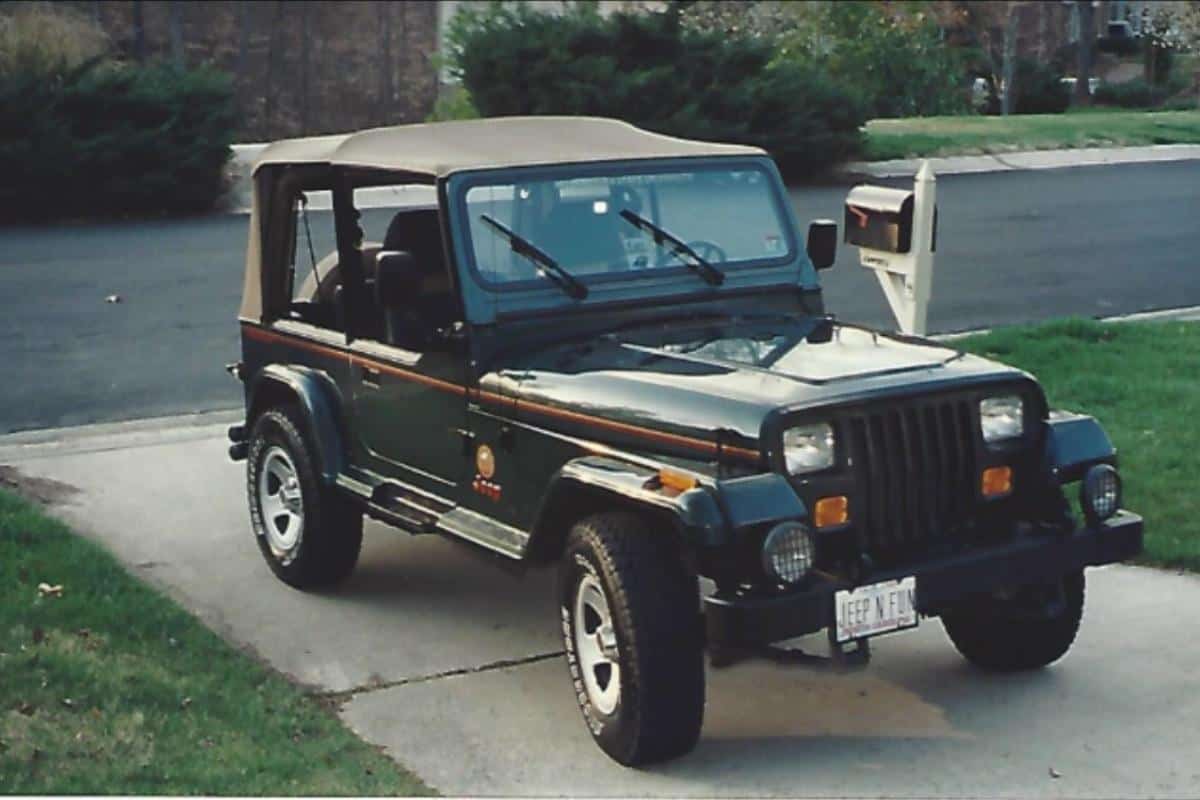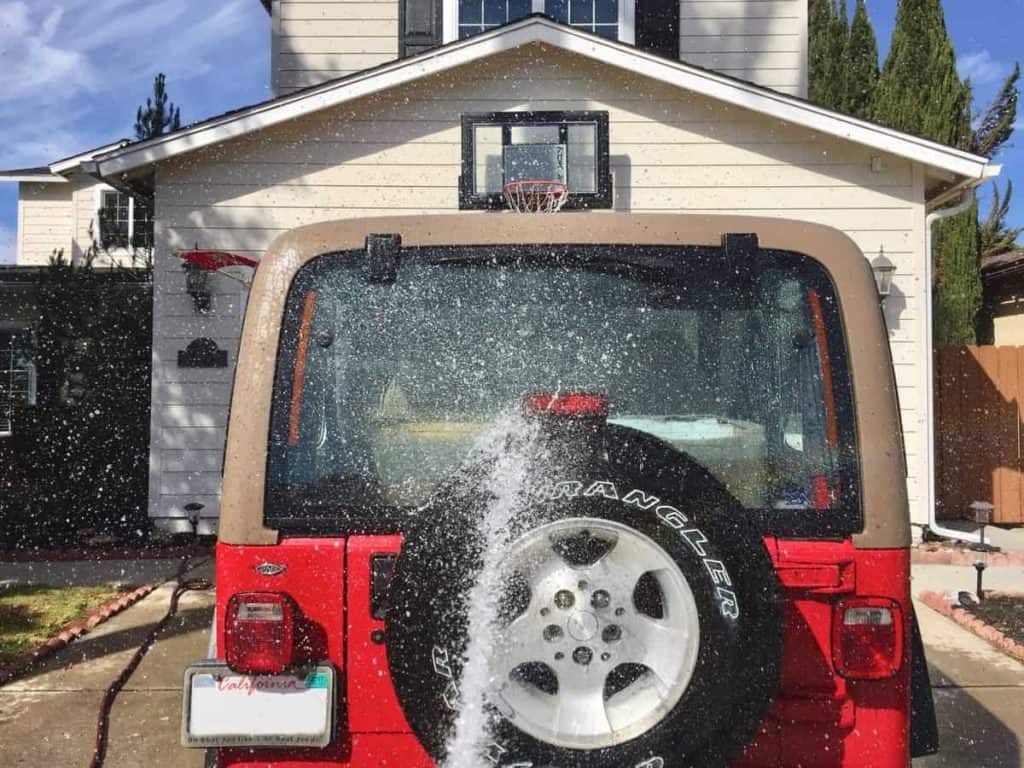What Is the Best Year for Jeep YJ? (Wrangler ’87 – ’95)
Jeeps had a long history in America. The classic CJ edition was first created near World War II’s conclusion and continued as a production vehicle for more than 40 years for those wanting to go off-road.
The Jeep Wrangler TJ was introduced in 1997 and had a 10-year run of success.
But the version that bridged these two famous Jeeps is beginning to get a little more notice these days.

The Wrangler YJ was built between 1986 and 1995 and had some interesting features in which car enthusiasts are taking a renewed interest.
Now people wonder, of those 11 years, what is the best year for Jeep YJ models?
The 1994 Jeep Wrangler is the best year for the Jeep YJ because it is the first year with a galvanized tub to help reduce rusting.
This being said, my favorite year is 1993 because that was my first Jeep and the one that started my lifelong passion for Jeeps.
Keep reading to discover more about the Jeep Wrangler YJ and its interesting history.
What is The Best Year For Jeep YJ Models?
If you want to get into this iconic SUV, then the 1994 year is the best year for Jeep YJ novice enthusiasts.
Other good models include the 1993 and 1995.
Introducing the Wrangler
The Jeep Wrangler YJ was a departure, to say the least. It featured square lights, new interior options, improved comfort, safety, and handling.
Lower to the ground than its CJ predecessor, the YJ offered a new chassis on the same 93.4-inch wheelbase of the original Jeep that dated back to 1944.
The Wrangler was originally built in Ontario, Canada. Production moved to Toledo, Ohio, in 1992. During its 11-year run, Jeep sold more than 685,000 YJ’s. In 1986, the base Jeep YJ cost $8,995.
From 1986 to 1990, the base model Jeep YJ sported a 2.5L inline-four engine, which was standard on many Dodge, AMC, and Jeep cars and wagons at the time.
Buyers could upgrade to a 4.2L 6-cylinder engine. In 1991, Jeep introduced a fuel-injected 4.0L engine that delivered an additional 75 horsepower. While not the best years for the Jeep YJ, these are solid options if you can find one in good condition.
In 1992, Jeep extended the interior roll cage, squared it off, and added shoulder belts for the rear seat passengers. A year later, anti-lock brakes became an option. In 1994, the four-cylinder Wrangler was given an optional automatic transmission.
These options are why we consider 1994 the top contender in what is the best year for Jeep YJ models.
Wranglers were known for their plastic zipper windows and “half doors.” Conventional glass windows and full-frame doors were only available as options. YJ’s also sported large side mirrors that had to be manually adjusted.
Between 1988 and 1993, Jeep offered a cheeky version of the YJ, known as the Islander. In addition to the standard colors, Jeep presented Pacific Blue, Malibu Yellow, and Bright Red options with wheel flares, sunset graphics, and decals.

But its most popular version was the Renegade, built between 1990 and 1994. The extra options added more than $4,000 to the base price.
They included alloy wheels with five distinctive holes, a regulation spare attached to the back half-door, power steering, fog lamps, tilted leather steering wheel, 20-gallon tank, and off-roading shock absorbers. Most came complete with upgraded AM/FM/cassette radio and speakers.
Other versions of the Jeep Wrangler included the Laredo, the Sahara, and the Rio Grande.
According to the Insurance Institute for Highway Safety (IIHS), the Wrangler achieved an acceptable rating in its moderate-overlap front crash test. But it was only rated as marginal during the side crash test.
The YJ series occupies an interesting time in the development of the Wrangler. Jeep produced it before and after the federal government began imposing new emissions standards on American vehicles.
And frankly, Jeep wasn’t prepared for those changes. They tried to jerry-rig new parts into its engines to comply. They also installed a long vacuum tube that was unwieldy at best. When something went wrong, the YJ engine was a bear to fix.
Because of those developments, the YJ is not as popular today as its historic predecessor (CJ) or its better-made successor (TJ). Yet, it’s the model that kicked off the iconic Wrangler series, which is still recognized as the premier off-roading production vehicle in American car history.
‘87 YJ
The first year of the new YJ production, 1986, took Jeep in a new direction. It introduced the half-door concept but used snaps to attach the plastic door assembly to the steel. All other versions used a zipper, so the ’87 does not mount with any other YJ top. In addition, Jeep added windshield-mounted mirrors, but they dropped those in ’88. Plus, the engine’s design forced many repairs to remove the transmission first, costing hundreds of extra dollars.
And to top it off, Jeep didn’t even offer a door lock or key. Can you imagine not being able to lock up your valuables at any time?
This was the concept that AMC motors introduced. Chrysler, under famed boss Lee Iacocca, purchased the Jeep brand a year later. They began to fix many of the original design (and engine) flaws throughout the rest of the production cycle.
In many cases, first-year production designs are often seen as the best and most iconic (think Mustang or Corvette), but that is certainly not the case in the Jeep YJ.
‘88-‘90 YJ
During the next three years, the YJ moved in the right direction by learning from the mistakes of the ‘87 model. They added locks to the half-doors, installed a zipper top that became standard for the entirety of the production cycle, and moved the significant side mirrors to the door assembly. Both the standard and upgraded engines were reconfigured for better ease of use and repair. They kept the eye-catching square headlights, a hallmark of the YJ design. The fuel tank increased to 20 gallons on some versions.
‘91 YJ
Jeep introduced the stronger 4.0L engine in the 1991 model year. It replaced the long vacuum tubes of previous YJs and provided a stable fuel-injection system that gave it ample power for off-roading. This was also the first year of the popular Renegade line.
‘92 YJ
The federal government imposed tighter crash safety standards, and Jeep responded. They squared off the roll cage so back-seat passengers could have safer three-point seatbelts. They also added a permanent four-wheel-drive indicator light to the center console and an electronic speedometer. That replaced the cable-driver speedometer of previous model years.
‘93 YJ
Jeep added a third brake light to satisfy new government regulations. They also offered an upgraded all-wheel braking system (ABS) for the first time. However, they have often suffered dramatically on this off-roading vehicle, so many owners have disabled or removed their ABS systems over the years.
As mentioned above, I am biased towards the 1993. Here’s a photo of my first YJ when it was a year or two old.

‘94 YJ: Winner Of What Is The Best Year FOr Jeep YJ Models
The most important innovation on the ’94 YT was the introduction of the master/slave clutch that replaced the hydraulic throwout bearing. Chrysler installed that setup for the final two model years. Also, the ’94 model was the last of the Renegade line.
It may not sound like much, but the upgraded master/slave clutch setup was a $400-500 repair at a shop vs. a $150 repair you could do at home after the upgrade.
Two other upgrades for 1994 included a galvanized tub to reduce body rust and the introduction of the 3rd break light.
The most notable way to identify a 1994 or newer YJ is because it has a 3rd break light above the spare tire (see photo below).
We love this model year, and it’s the best answer to “what is the best year for Jeep YJ models?”

‘95 YJ: Runner Up To What Is The Best Year For Jeep YJ models
Some will say the last model year of the YJ was the best, as Jeep (thanks to Chrysler) put everything together for one last run before turning the Wrangler over to the revamped TJ series.
The ‘95 YJ boasts the strongest fuel-injected engine in its class. They came standard with dual-diaphragm brake boosters and external clutch cylinders.
Otherwise, Jeep changed virtually nothing of import from the ‘94 model year and rode out the wave until introducing the TJ Wrangler in 1997. (There was no Wrangler for the 1996 model year while Jeep made the transition).
Closing Thoughts On What Is The Best Year For Jeep YJ Models?
According to user reviews on Edmunds, owners love the ruggedness of the old Wrangler, especially the 1994 version. We agree.
The 1994 Jeep Wrangler YJ Renegade is our favorite and a clear answer to the question “What is the best year for Jeep YJ models?”
There are other candidates, such as the 1993 and 1995 models, but we consider this one as the best.
